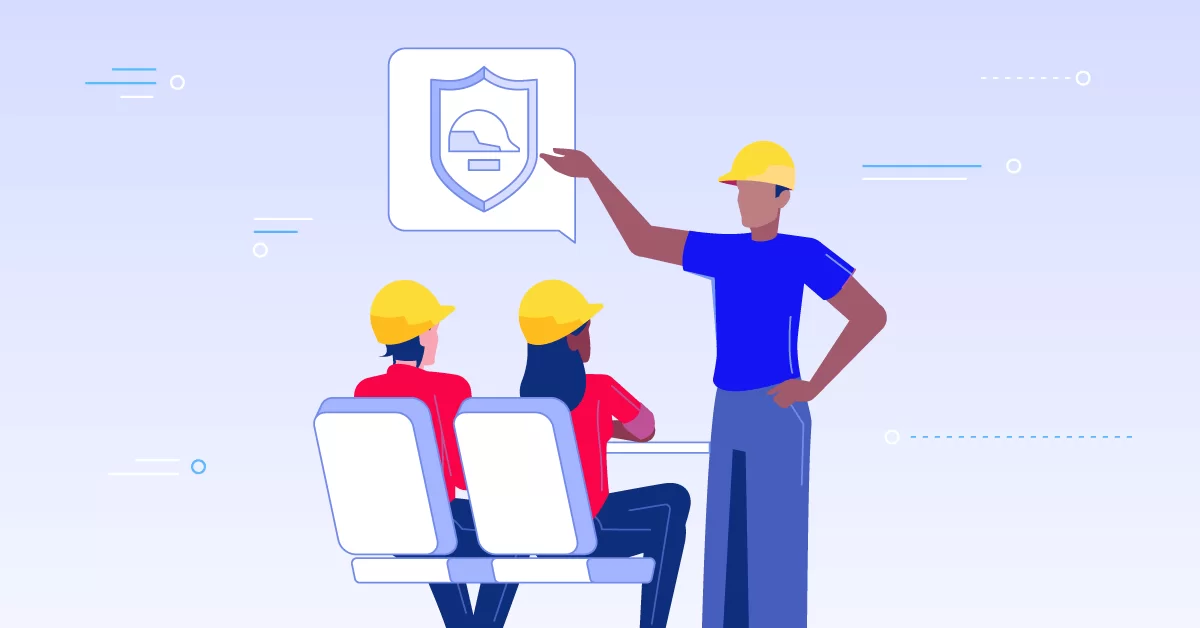Turning corporate learning on its ears
Flipped classroom learning isn’t all that new. In fact, the concept was already in use by educators in places of eminence like Harvard University as far back as 1991. However, the corporate world often tends to take a “wait and see” approach before wholeheartedly embracing new concepts.
So, what does it mean to flip your classroom? Put simply, it means reversing the traditional roles of class work and homework. Flipped courses provide lectures and other informational material for learners to consume on their own time, via asynchronous self-study content, video-on-demand, or other similar means.
Then, there are also components of the model where other flipped classroom activities, like group interactions, collaborative projects, and instructor-led lectures, which happen in synchronous settings – a conference room, a convention center or a corporate training facility.
Unlike a traditional, classroom-centric course, or a purely distance-learning program, the flipped classroom approach is a blended learning technique that marries the best of synchronous and asynchronous teaching approaches.
Why Flip?
Embracing the flipped classroom approach isn’t just about adopting a new fad or jumping on a bandwagon. There are real advantages that companies can gain by flipping, some of which include:
1) Better use of trainers and SMEs
One of the biggest expenses that corporate training entails is on making dedicated trainers, mentors and SMEs available in-person, and full-time, to staff undergoing training. Since a considerable amount of most corporate learning requires inputs from these scarce resources, flipping maximizes their utilization by offering corporate learners a chance to selectively interact with their trainers in real life only during critical segments of the course.
2) Cost-effective
One of the flipped classroom advantages most commonly cited is the economics of flipping. The logistical costs (travel, accommodations, meals, lost time) of getting staff and trainers together more frequently, especially if the training group is large and dispersed across geographies, can be astronomical for a business. Using the flipped classroom approach makes corporate training more cost effective.
Using the flipped classroom approach makes corporate training more cost effective.Share on
3) Learning at their own pace
The use of asynchronous technologies to make training content available on-demand is another advantage of the flipped classroom model. Corporate learners have day jobs and other tasks that they need to complete, beyond their training. Flipping classroom time into private study time gives professionals the opportunity to schedule learning at their convenience.
4) Minimizes operational disruptions
Proponents of the flipped classroom approach point to the fact that, by inverting the need for in-person interaction, and scheduling such contact only for critical milestones (e.g. joint workouts, live brainstorming, working model demonstrations, etc), staff can continue to support the business and its clients as normal, while still taking part in flipped classroom activities.
5) Improves hands-on collaboration between staff
The benefits of the flipped classroom include incorporating intensive, hands-on collaborative activities that staff from across the company work on. Such activities usually happen with teams representing a cross-section of company personnel. As a result, the effectiveness of flipped classroom training is greatly enhanced.
Flipping Challenges
Just like everything else, the flipped classroom approach isn’t without its detractors, however. Some instructional designers think that using this model extensively in enterprise learning can be harmful because:
1) It furthers the digital divide
Naysayers point out that by pushing learners out of the corporate training room, company management will further isolate them and hasten the onset of digital divide within the company. Employees will feel isolated and won’t see themselves as part of a “corporate team”.
2) Overly reliant on student trust
When you flip your classroom, you tend to delegate a lot of responsibility to learners. You rely on them to be diligent about, for instance, watching prescribed videos or reviewing important materials before each face-to-face interaction. In some flipped classroom examples, like mandatory compliance training, such over-reliance might not be appropriate or safe.
3) Networking opportunities restricted
The disadvantages of flipped classroom courses also include diminished opportunities for staff from dispersed areas of the company to meet more frequently to network. By limiting in-person meet ups to a select number of occasions, flipped classroom learning potentially prevents future colleagues, peers, and supervisors from getting together to know each other and establish connections that can be leveraged in the future.
4) Denies learners “face time”
Since this approach relies heavily on flipped classroom tools like video-on-demand, pre-recorded voice lectures, and archived learning content, learners aren’t offered the same amount of access and face time to lecturers as they would receive in traditional learning.
Making it Work
There’s no doubt that each of the flipped classroom pros and cons explored above has merit in its own right. Supporters and detractors can easily make the case for or against embracing this approach to corporate learning.
However, the trick to making the flipped classroom approach a success is in understanding that there is no one-size-fits-all method of implementation. Success is all about blending and creating unique approaches that fit your company.
Success is all about blending and creating unique approaches that fit your company.Share on
Here are some thoughts to consider in enhancing the effectiveness of flipped classroom training:
1) Leverage technology
The technologically-induced “digital divide” challenge outlined above is very real. However, companies can use the technology itself to break down those divides. You can do so by introducing more synchronous contact as part of your flipped classroom activities. For example:
- Have a moderated chatroom where every participant must be present during specific segments of the course.
- Make sure that the flipped classroom model your company implements includes smaller sub-groups that are led and moderated by individual “leaders”. Instructors can then stay more frequently in touch with this handful of leads.
- Insist on more frequent chat postings and collaboration from every participant.
2) Force participation
While the use of some flipped classroom tools, such as pre-recorded lectures and talks, makes this an endearing approach for enterprise eLearning, it is also a core part of the “digital divide” argument. Here’s one way to mitigate that criticism:
- Instead of routinely pre-recording and archiving your “away from class” lectures and study materials, live-cast them as often as you can.
- Then, make learners aware that there will be a test or quiz on the subject matter covered by the live-cast before you make the content available on-demand or in your archives.
Of course, all of the live-cast materials should subsequently be made available in archives – but only following the advertised test/quiz. This slight improvisation in the flipped classroom approach will enforce greater real-time student participation, albeit remotely.
3) Being available
Flipped classroom learning, by default, means less instructor/lecturer/mentor availability, compared to traditional learning approaches. However, you can turn that slight negative into an overwhelming positive when you flip your classroom:
- Be available “on demand” (or at least on short notice) to your learners.
- Allow learners to contact you through multiple means – phone, email, Twitter, corporate video conferencing, Skype.
- Designate others, such as a local manager or supervisor, to serve as alternate points of contact.
Doing this will enhance the effectiveness of flipped classroom initiatives because learners separated by time and distance will know that help is always available to them.
Not a Panacea
When it comes to delivering staff-focused enterprise eLearning, flipped classroom advantages far outweigh the disadvantages. However, it is crucial to remember that no single approach to corporate training is a silver bullet to a company’s training challenges.
Training staff successfully, especially in corporations that have a large geographic footprint, requires an integrated training strategy which should comprise a blend of training methods. The flipped classroom approach should be one component of your online corporate training strategy, albeit a very important one.


